Do the Bundys Signal the End of the Great American West?
When public land is transferred to states, significant portions end up being sold off to private interests—and that means less wild nature for all Americans to enjoy.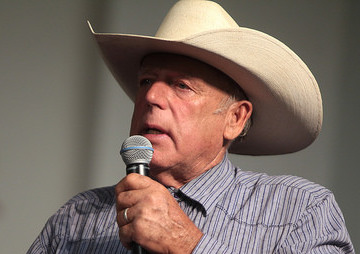 Nevada rancher and public lands scofflaw Cliven Bundy leads the contemporary attack on public land ownership. (Gage Skidmore / CC BY-SA 2.0)
1
2
3
Nevada rancher and public lands scofflaw Cliven Bundy leads the contemporary attack on public land ownership. (Gage Skidmore / CC BY-SA 2.0)
1
2
3

Nevada rancher and public lands scofflaw Cliven Bundy leads the contemporary attack on public land ownership. (Gage Skidmore / CC BY-SA 2.0)
It goes without saying that in a democracy everyone is entitled to his or her own opinions. The trouble starts when people think they are also entitled to their own facts.
Away out West, on the hundreds of millions of acres of public lands that most Americans take for granted (if they are aware of them at all), the trouble is deep, widespread, and won’t soon go away. Last winter’s armed take-over and 41-day occupation of Malheur National Wildlife Refuge in southeastern Oregon is a case in point. It was carried out by people who, if they hadn’t been white and dressed as cowboys, might have been called “terrorists” and treated as such. Their interpretation of the history of western lands and of the judicial basis for federal land ownership — or at least that of their leaders, since they weren’t exactly a band of intellectuals — was only loosely linked to reality.
At least some of them took inspiration from the notion that Jesus Christ wrote the Constitution (which would be news to the Deists, like James Madison, who were its actual authors) and that it prohibits federal ownership of any land excepting administrative sites within the United States — a contention that more than two centuries of American jurisprudence has emphatically repudiated.
The troubling thing is that similar delusions infect pockets of unrest throughout the West, lending a kind of twisted legitimacy to efforts at both the state and national level to transfer western public lands to states and counties. To be sure, not all the proponents of this liquidation of America’s national patrimony subscribe to wing-nut doctrines; sometimes they just use them.
Greed can suffice to motivate those who lust for the real estate bonanzas and resource giveaways that would result if states gained title to, say, the 264 million acres presently controlled by the Bureau of Land Management (BLM). General combativeness and hostility toward government also play their roles, and the usual right-wing mega-donors, including the Koch brothers, pump money into a bewildering array of agitator groups to help keep the fires of resentment burning.
The louder the drum chant of crazy “facts” gets, the more the Alice-in-Wonderland logic behind them threatens to seize the popular narrative about America’s public lands — how they came to be and what they represent. This, in turn, prepares the way for the betrayal of one of the nation’s deepest traditions and for the loss of yet more of its natural heritage. Conversely, those who value American public lands have been laggard in articulating an updated vision for those open spaces appropriate to the twenty-first century and capable of expressing what the unsettled “fruited plains” and “purple mountain majesties” of the West still mean for our national experience and our capacity to meet the challenges of the future.
The Malice at Malheur
The leaders of the Malheur occupation, Ammon and Ryan Bundy, are the sons of Cliven Bundy, a Nevada rancher and public lands scofflaw who gained notoriety two years ago following a standoff with federal law enforcement officers. Back in the 1990s, the elder Bundy had stopped paying grazing fees, claiming that the federal government had no authority to regulate the public lands where his cattle fed. In 2014, with Bundy $1.1 million in arrears and his grazing permits transferred to the local county government, the Bureau of Land Management moved to round up and confiscate his 400 head of cattle.
Via social media, Bundy appealed to militia and “patriot” groups for support, and hundreds of armed resisters rallied to his ranch 90 miles north of Las Vegas. When the ensuing showdown threatened to become a bloodbath like the Waco siege of 1993, the authorities withdrew.
The government’s retreat and its failure to arrest members of the Bundy family or their allies for acts of armed resistance set the stage for the Malheur takeover, but the roots of the incident go back to the Sagebrush Rebellion of the 1970s and 1980s and the Wise Use Movement that succeeded it. The Sagebrush Rebellion was triggered by a national inventory of public lands to identify areas appropriate for designation as “wilderness” (under the National Wilderness Preservation System). Its advocates also protested the enforcement of government protections for archaeological sites and endangered species. Wise Use groups echoed those complaints and essentially argued against anything the environmental movement was for, urging the amped-up exploitation of natural resources on western lands.
Ammon Bundy put his own rogue-Mormon spin on that message by claiming divine inspiration and sanction for his actions. Ostensibly, the Malheur occupation was intended to show support for nearby ranchers Dwight and Stephen Hammond, who faced jail terms for setting illegal range fires (and who immediately distanced themselves from the occupation). But Bundy didn’t stop there. He called on “patriots all over the country” to join his cause and help “free up” federal land for ranching, mining, and logging, pointedly adding, “We need you to bring your guns.”
Malheur was an odd place for white guys to make a stand in favor of “returning” federal land to its “rightful owners” — that is, themselves. The refuge was established in 1908 when Teddy Roosevelt declared a modest area of public domain to be a wildlife refuge. If anyone then occupied the land, it was members of the Burns Paiute tribe, not white settlers. In the 1930s, the refuge expanded when the government bought the bankrupt remnants of a former cattle baron’s empire. At the time, Malheur was its own mini-Dust Bowl. The purchase, which enlarged protection for once-fabulous wetlands supporting thousands of migrating birds, was essentially a bailout.
The people who joined the Bundys in the Malheur occupation were a strange lot. Few had any relationship to ranching or actual cows, aside from sitting down to eat a hamburger. Some were ex-military; others claimed to be (but weren’t). Quite a few had links to Tea Party groups or to “patriot” organizations including the Oath Keepers, the Three Percenters, and an assortment of other militia outfits. One described himself as “an old hippie from San Francisco,” jazzed by the excitement of the occupation and uncaring about its purposes. He also happened to be a convicted murderer (second degree) — of his father.
Your support matters…Independent journalism is under threat and overshadowed by heavily funded mainstream media.
You can help level the playing field. Become a member.
Your tax-deductible contribution keeps us digging beneath the headlines to give you thought-provoking, investigative reporting and analysis that unearths what's really happening- without compromise.
Give today to support our courageous, independent journalists.
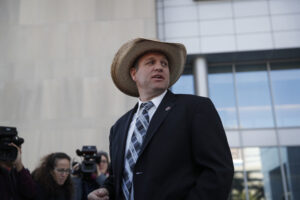
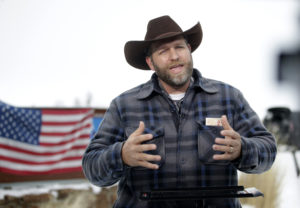
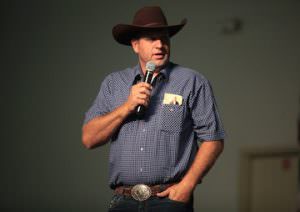
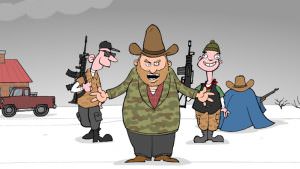
You need to be a supporter to comment.
There are currently no responses to this article.
Be the first to respond.